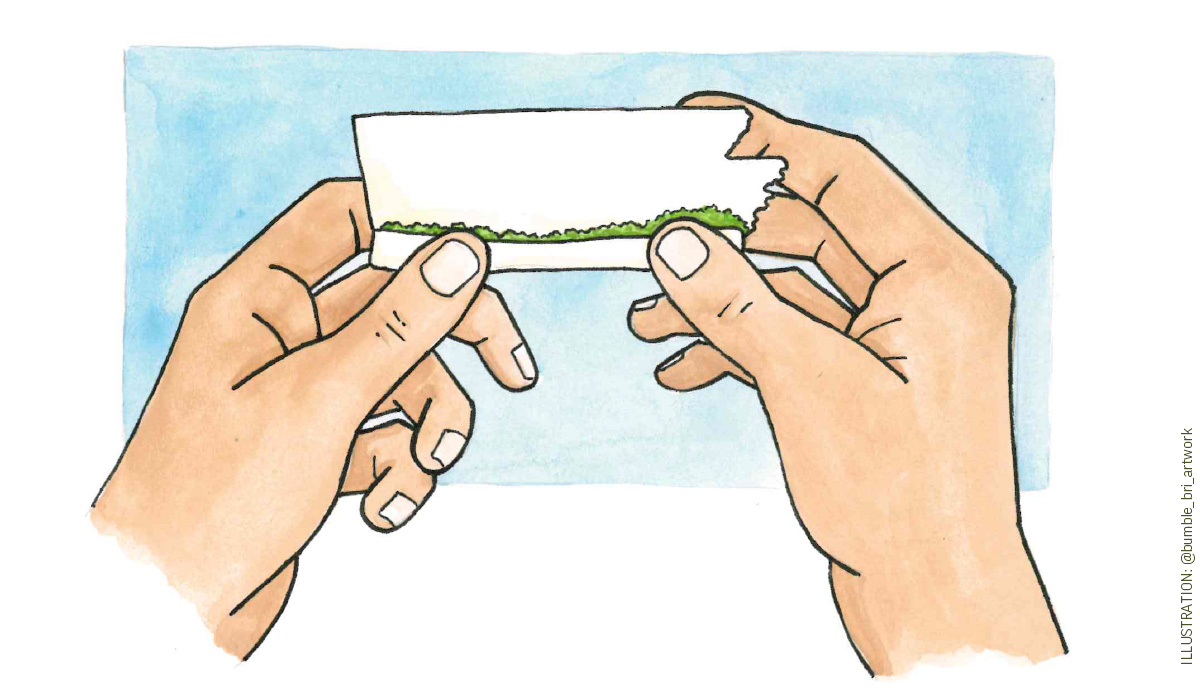Wrap It Up
The State Of Cannabis In Arkansas.
By Griffin Coop

The Arkansas cannabis industry has come a long way in eight years.
Since Arkansas voters passed a constitutional amendment to legalize medical marijuana in 2016, the state has gone from having no (legal) cannabis industry to one that has done more than $1 billion in retail sales.
The industry started with a big learning curve for both retail and cultivation operation, but it has since developed expertise in those fields, according to Bill Paschall, executive director of the Arkansas Cannabis Industry Association.
And, Paschall says, the industry is still growing.
There were 97,253 active patient cards as of early February, and that’s with some barriers in place that make it harder for prospective patients to sign up for the program or for others to renew their cards. A constitutional amendment to expand the state medical marijuana program would eliminate — or at least lessen — some of those barriers to entry, like the one-year life of patient cards and the need to have one of 18 qualifying conditions.
First, let’s discuss how Arkansas’s green economy reached this point.
In 2016, voters passed the Arkansas Medical Marijuana Act with 53.11% in favor. That amendment, supported by about half of the state’s 75 counties, allowed for up to 40 dispensaries and up to eight cultivation facilities with the state Medical Marijuana Commission sorting out the licensing process.
Things got off to a slow start as the industry jumped through all the regulatory hoops, but on May 11, 2019, the state’s first legal medical marijuana sale took place at a dispensary in Hot Springs.
Since then, a total of 38 dispensaries have popped up all around, two short of the maximum 40 dispensaries allowed by law. (The state Medical Marijuana Commission has been prohibited by a court ruling from issuing the final two dispensary licenses).
Sales data shows the state’s dispensaries have sold more total products each year since the first legal jars of bud were opened in Arkansas in 2019. Some of those dispensaries are even growing their cannabis plants, although the number of plants is limited by state law.
Most of the state’s cannabis plants are grown in the eight cultivation facilities located throughout the state. Cultivators, primarily located in rural areas or urban industrial parks, grow the plants in controlled environments with bright lights and powerful ventilation systems that create the ideal environment for the plants. The facilities have rooms for drying and trimming the plants as well as extracting their desired components to create other products, like edibles.
Cultivators aren’t the only ones creating products for the state’s patients, though. Cannabis processors, like Dark Horse Medicinals in Little Rock, create products using cannabis plants (or their components) that are grown at cultivation facilities and dispensaries. Processors turn those materials into consumable products, including edibles, vapes, topicals and more.
The products, led by flower, have produced big sales numbers but they’ve produced big tax revenues for the state, too. The state collects a 6.5% sales tax and a 4% excise tax on sales made at dispensaries. Dispensaries also pay the excise tax when they purchase products from cultivators.
The state collected more than $31 million from those taxes in each of the last three calendar years. Since 2019, the taxes have brought in more than $120 million. A portion of the yearly tax revenue — about $3-5 million annually — goes to certain state agencies to operate the medical marijuana program. The rest, usually about $26 million, has gone to the University of Arkansas for Medical Sciences to support its pursuit of a National Cancer Institute designation.
This year, a change in state law has directed the excess money away from UAMS and toward food insecurity and health needs. The first slice of the money is going to support public school meals, so any child who is eligible for reduced-price meals will receive that meal for free. That will take about $3 million of the medical marijuana revenue, leaving about $23 million to be allocated for other food insecurity or health needs.
In 2022, state cannabis industry leaders tried to legalize marijuana for adults 21 and older with a constitutional amendment that would have also increased the number of dispensaries and added some small cultivation facilities.
A pair of unlikely opponents, marijuana advocates Melissa Fults and David Couch campaigned against the issue. Fults felt the amendment would have caused the industry to prioritize recreational consumers and not focus on medical patients. Couch felt the amendment was too favorable to the existing industry.
In the end, 56.25% of voters voted against the measure.
This year, the cannabis industry has proposed an amendment to expand the state medical marijuana program. And Fults and Couch are on board.
The amendment would eliminate the state’s $50 for a patient card and would extend the life of a patient card from one to three years. The measure would allow pharmacists, nurse practitioners and physicians’ assistants to certify patients for the program and allow them to do so for any “debilitating” medical condition, not just the 18 existing qualifying conditions. It would also allow patients to grow up to seven mature plants and up to seven immature plants.
Once approved, the measure will need 90,704 verified signatures to make the ballot. If that happens, voters will have a chance to expand the program they approved to kick off the state cannabis industry eight years ago.
Smokin’ Stats
Charting the Medical Marijuana Market in Arkansas by Year
Sales
2019 – $31.32 million
2020 – $181.8 million
2021 – $264.9 million
2022 – $276.3 million
2023 – $283 million
Pounds
2019 – 4,735 pounds
2020 – 28,021 pounds
2021 – 40,347 pounds
2022 – 50,547 pounds
2023 – 62,227 pounds
Taxes
2019 – $2,900,536
2020 – $21,267,554
2021 – $33,181,375
2022 – $32,072,444
2023 – $31,089,221



